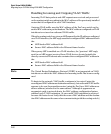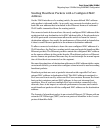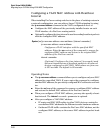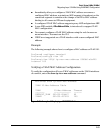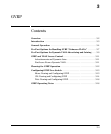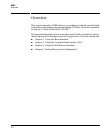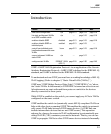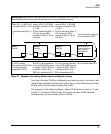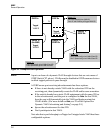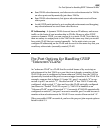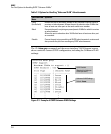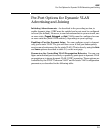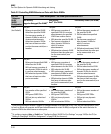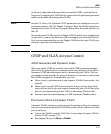
GVRP
General Operation
having to set up VLANs across your network. After the switch creates a
dynamic VLAN, you can optionally use the CLI static <vlan-id> command to
convert it to a static VLAN or allow it to continue as a dynamic VLAN for as
long as needed. You can also use GVRP to dynamically enable port member-
ship in static VLANs configured on a switch.
Not e : On the switches covered in this guide, GVRP can be enabled only if max vlans
is set to no more than 256 VLANs.
General Operation
When GVRP is enabled on a switch, the VID for any static VLANs configured
on the switch is advertised (using BPDUs—Bridge Protocol Data Units) out
all ports, regardless of whether a port is up or assigned to any particular VLAN.
A GVRP-aware port on another device that receives the advertisements over
a link can dynamically join the advertised VLAN.
A dynamic VLAN (that is, a VLAN learned through GVRP) is tagged on the port
on which it was learned. Also, a GVRP-enabled port can forward an advertise-
ment for a VLAN it learned about from other ports on the same switch (internal
source), but the forwarding port will not itself join that VLAN until an adver-
tisement for that VLAN is received through a link from another device (exter-
nal source) on that specific port
3-4



